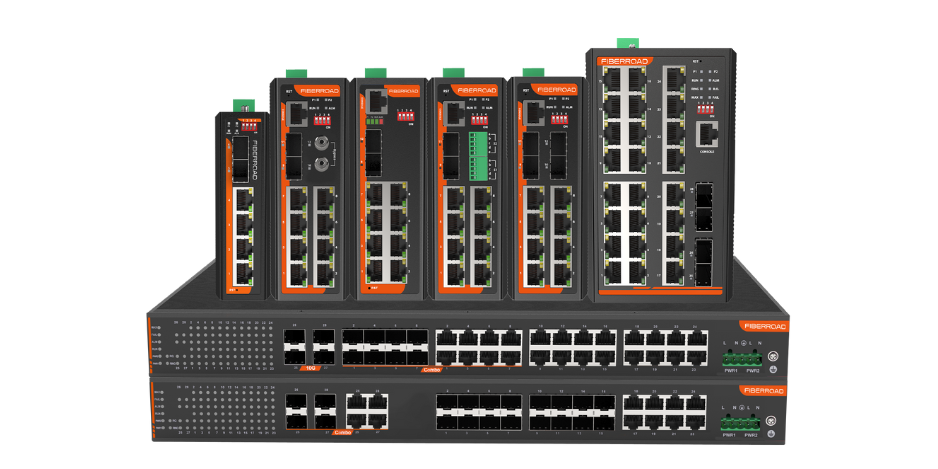Ethernet Terms
Industrial Ethernet can also refer to the use of standard Ethernet protocols with rugged connectors and extended temperature switches in an industrial environment, for automation or process control.
1000BASE-T
A standard for 1000 Mbps Ethernet communication over Category 5 UTP.
10GBASE-SR/LR/LRM/ER/ZR
There are two basic types of optical fiber used for 10 Gigabit Ethernet: single-mode (SMF) and multi-mode (MMF).[20] In SMF light follows a single path through the fiber while in MMF it takes multiple paths resulting in differential mode delay (DMD). SMF is used for long-distance communication and MMF is used for distances of less than 300 m.
Numbers
4B/5B
A block encoding scheme is used to send Fast Ethernet data. In this signal encoding scheme, 4 bits of data are turned into 5-bit code symbols for transmission over the media system.
8B/10B
The 8B/10B encoder takes in 8-bit data and 1-bit control as input and converts them into a 10-bit output. The 8B/10B encoder automatically performs a running disparity check for the 10-bit output.
10BASE-T
10 Mbps Ethernet system based on Manchester signal encoding transmitted over Category 3 or better twisted-pair cable.
10BASE-FL
Popular 10 Mbps link fiber optic solution which replaces the older FOIRL implementation utilizing 850 nm fibre optic technology.
100BASE-FX
100 Mbps Fast Ethernet system based on 4B/5B signal encoding transmitted over fibre optic cable utilizing 1300 nm fibre optic technology.
100BASE-FX
100 Mbps Fast Ethernet system based on 4B/5B signal encoding transmitted over fibre optic cable utilizing 1300 nm fibre optic technology.
100BASE-TX
100 Mbps Fast Ethernet system based on 4B/5B signal encoding transmitted over two copper pairs.
100BASE-X
The term used when referring to any Fast Ethernet media system based on 4B/5B block encoding. Includes 100BASE-TX and 100BASE-FX media systems.
802.3 IEEE
The CSMA/CD group is the oldest working group in the 802 projects. It defines the norms according to the CSMA/CD access procedures proposed by the DIX group. This working group focuses on discussing high-speed protocols.
802.1x
802.1X is a network authentication protocol that opens ports for network access when an organization authenticates a user’s identity and authorizes them for access to the network
A
Address Resolution Protocol (ARP)
A TCP/IP protocol for obtaining the physical address (MAC) of a node when the Internet address is known.
Applet
A computer program for creating an active Web document – usually written in Java.
Application Layer (Layer 7 in the OSI model)
This is the highest OSI layer in which networking application software interfaces with the human operator and uses underlying protocols to establish host-to-host connections. Examples include a Web browser, an email application, Telnet and a building management system application.
Application Programming Interface (API)
The information is followed by programmers to write client-server programs.
Asynchronous Transmission
Transfer of data with start/stop bits and a variable time interval between data units.





